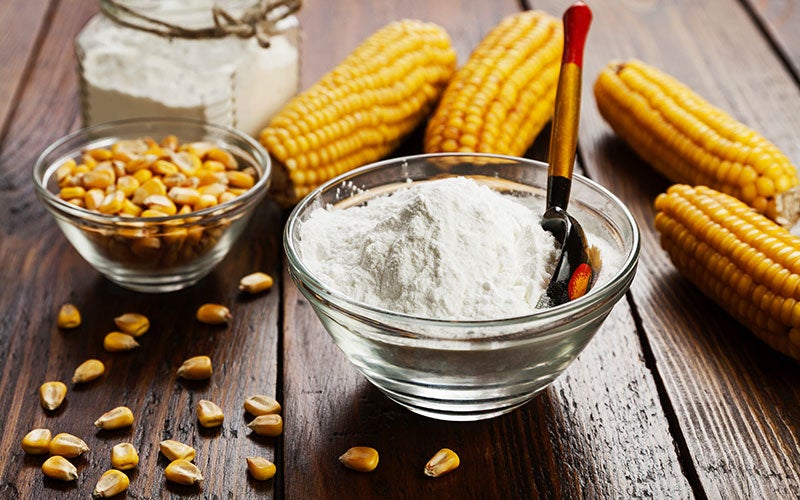Can starch help you lose weight? Let’s find out
 ©minadezhda
©minadezhda
A healthy lifestyle includes a balanced and nutritious diet, rich in protein, healthy fats, and complex carbohydrates. Though starchy food is often villainized by the diet industry, it’s actually one of the best sources of carbohydrates, one of the food groups responsible for supplying us with energy. Here, we explain everything you need to know about starch, including why they are considered to be “healthy sugars” and can even help you lose weight.
What is starch?
Starch is a polysaccharide, the most abundant type of carbohydrate found in food. It’s composed of hundreds of glucose molecules. Corn, wheat, rice, and potatoes, for example, are all natural sources of starch.
In order to obtain starch from something, whether that’s corn or wheat, it first needs to be grated or ground in order to break down the cell walls and separate the starch granules. It’s then dried, ground, and transformed into a white, tasteless flour like corn starch that can be used in many different ways.
Uses of starch
Because of its thickening properties, it’s often used as a binding agent in cooking, whether that’s for sauces or cakes. It’s also frequently used to produce numerous products, like environmentally-friendly, biodegradable plastics, adhesives, fillers, and detergents. In medicine, it’s used as a base for balms, suppositories and tablets.
Which foods contain starch?
The main sources of starch are corn starch, flour, rice, whole grains, and potatoes. The table below summarizes the most common starchy foods.
| Food | Starch content per 100 grams |
| Corn starch | 88g |
| Rice starch | 80g |
| Rice cakes | 79g |
| White rice | 78g |
| Brown rice | 76g |
| Potato starch | 74g |
| White flour | 73g |
| Couscous | 72g |
| Millet flour | 70g |
| Wild rice | 66g |
| Cornmeal | 66g |
| Buckwheat | 65g |
| Millet | 63g |
| Bulgur | 59g |
| Oats | 58g |
| Whole wheat flour | 58g |
| Amaranth | 57g |
| Spelt | 54g |
| Quinoa | 52g |
| Lentils | 50g |

How is starch different from other carbohydrates?
In principle, all carbohydrates contain sugar. However, each different type of carbohydrate is composed of a different amount of molecules.
- Monosaccharides are also known as simple sugars because they are the most basic form of a carbohydrate. They include glucose, dextrose, and fructose.
- Disaccharides are two monosaccharides joined together by something called a glycosidic linkage. They include sucrose, lactose, and maltose.
- Polysaccharides are long chains of monosaccharides. They also include glycogen, cellulose, and many dietary fibers.
The body absorbs simple sugars like glucose relatively quickly because they pass directly into the bloodstream after consumption and supply immediate energy. It takes a little bit longer for our bodies to process long chain carbohydrates, because they contain more compounds and must be broken down by the digestive tract before they’re able to enter the bloodstream. Because it takes longer for the energy to reach the cells, the body has to work a bit harder.
All it takes is a quick glance at the nutrition label to find out how many carbs are in what you’re eating. But take a look closer and you’ll notice that it also indicates which types of sugar you’re consuming, and the amount of monosaccharides and disaccharides they contain. The higher the value is (for example, the more glucose the food contains), the faster your blood sugar level will rise after you eat.
Is starch healthy?
As a polysaccharide, starch is considered to be a complex carbohydrate. These types of carbs are often referred to as “healthy” sugars.
These starches are thought of as healthy because of the benefits they can have. It takes longer for the body to break them down and transport them to cells. Food stays in the stomach and intestines longer, stimulates digestion, and increases the volume of the stomach, resulting in feelings of lasting energy and satiation.
On the other hand, a simple sugar like glucose immediately diffuse into the bloodstream, which gives you a short-term energy boost that will end as quickly as it began.
Carbs are an important part of a balanced diet because it’s an essential energy provider. Without it, you won’t have enough energy to build muscle or lose weight.
As with all other foods, high starch foods like white bread, pasta, and mashed potatoes are all fair game when consumed in moderation and as part of a balanced diet.
Along with carbs, healthy fats, protein, and many vitamins, minerals, and trace elements are all essential to a well-rounded diet. Here’s the breakdown we recommend: 50-60% carbohydrates, 20-30% fat, and 15-25% protein.
Can it help me lose weight?
Because polysaccharides are complex compounds, it takes more time and energy for the body to break them down. Even on a low-carb diet, consuming starchy, slow-digesting food is essential. When in doubt, try to eat as many resistant starches as you can.
What are resistant starches?
Unlike “normal” food starches, these are indigestible. They pass into the small intestine without first being broken down. As a result, the body absorbs fewer calories from them. And when they do eventually break down in the colon, they create butyrate fatty acid—an important source of energy for the mucous membrane in the colon—during its decomposition.
Foods that contain resistant starches
They’re mainly found in raw and unprocessed foods, such as fresh potatoes, corn kernels, whole grain bread, and unripe bananas.
But it’s also possible to create resistant starch in the food you already have. Leave cooked potatoes, pasta, and rice to stand overnight. During this time, about 10 percent of the starch will crystallize into a resistant starch that can’t easily be broken down by the body. That means you’ll absorb fewer calories from eating them. Resistant starch contains about 1.5 to 3 calories per gram, while digestible carbohydrates contain an average of 4.1 calories per gram.
This is just another great reason to make meal prep part of your weekly routine. Starchy foods like pre-cooked pastas, potatoes, and white bread will all have slightly fewer calories in the days after you first made them.
Conclusion
- Starch is a polysaccharide. It’s a complex chain of simple sugars.
- Starch belongs to the family of complex carbohydrates. They provide our bodies energy when they’re broken down in the digestive tract.
- Starchy foods include grains, rice, corn, bread, and potatoes.
- Starch consumption is an integral part of a balanced diet.
Sources for this article
We at foodspring use only high-quality sources, including peer-reviewed studies, to support the facts within our articles. Read our editorial policy to learn more about how we fact-check and keep our content accurate, reliable, and trustworthy.






















